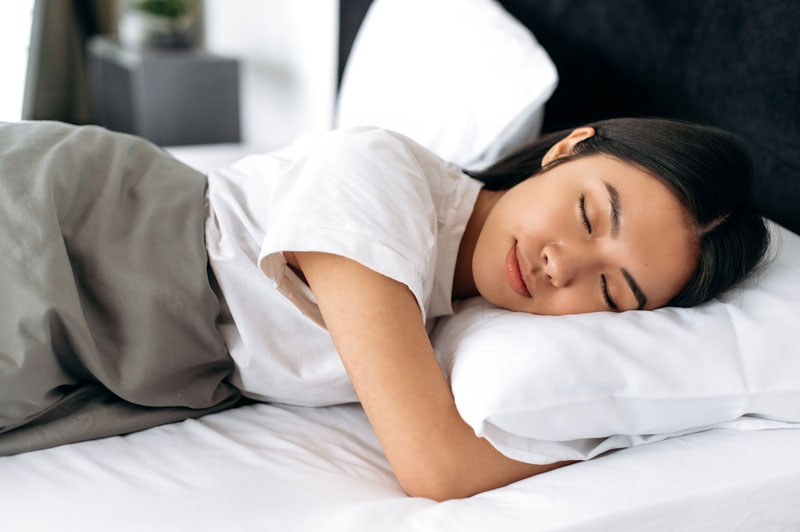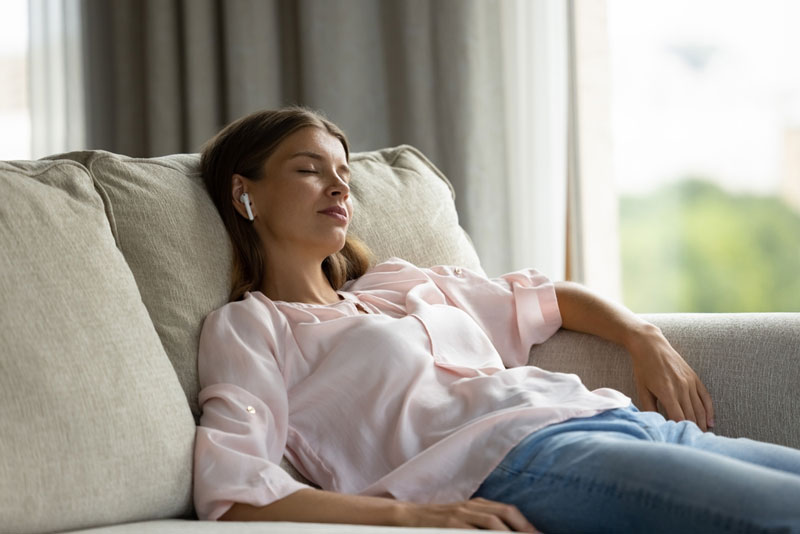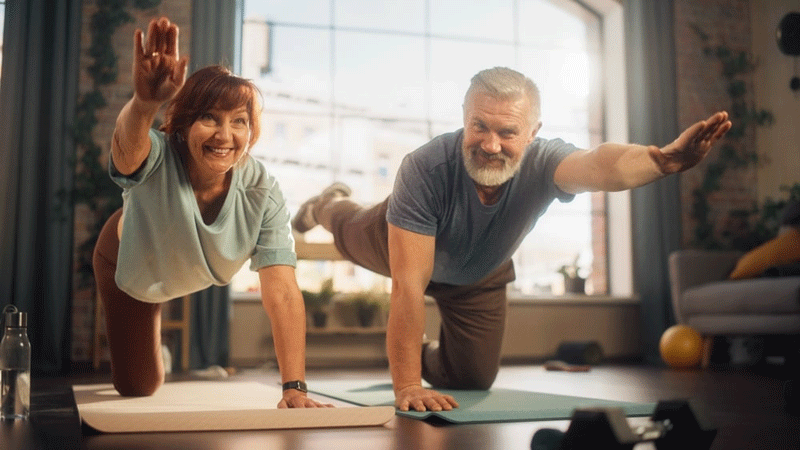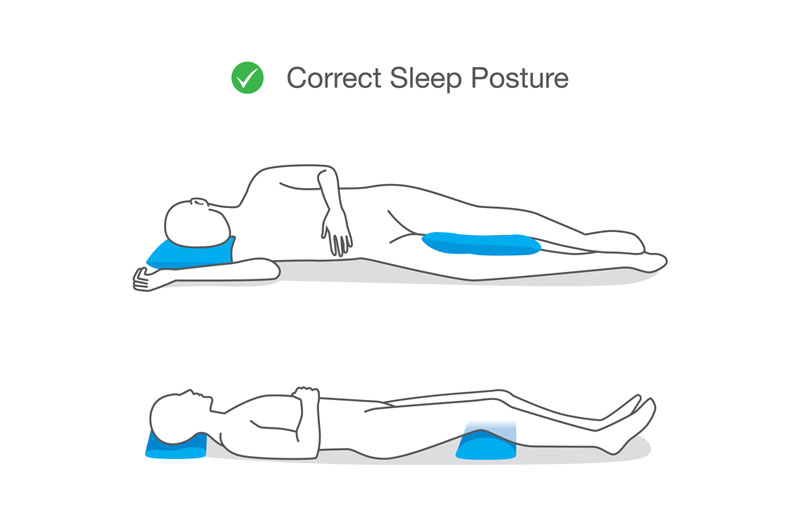The importance of sleep cannot be overstated in our constant pursuit of optimal health and well-being. While the amount and quality of sleep we get are crucial, the position we adopt during slumber is equally essential. The best sleeping direction can significantly impact our overall health and well-being.
Improving your sleep posture involves several strategies, including investing in the right pillow and mattress, practicing good sleep hygiene, and incorporating stretches and exercises to strengthen your core muscles and overall posture. By understanding its definition, benefits, position selection, and improvement strategies, we can achieve better sleep quality, reduce pain, and improve our overall health.
What Is Sleep Posture?
Sleep posture is the position in which a person has a peaceful goodnight sleep and wakes up refreshed. This seemingly simple aspect of sleep is a complex interplay of physiology, comfort, and habit. The human body can adopt various positions, each with its unique impact on muscles, joints, and internal organs. From the spine’s alignment to the ease of breathing, how we position ourselves during sleep can influence immediate comfort and long-term health.
Medella Springs Sleeping Supplement
Harnessing the power of Medella Springs’s natural ingredients, NoctoPlex is formulated to enhance sleep quality effortlessly. With its carefully selected components, this product aids in easing the process of falling asleep and maintaining uninterrupted rest throughout the night. Additionally, should you awaken, NoctoPlex facilitates a swift return to sleep, ensuring a restful slumber without any lingering grogginess upon waking. Experience the rejuvenating effects of NoctoPlex and wake up feeling refreshed and revitalized each morning.
Selecting The Optimal Sleep Position
Choosing the right sleep position is highly personal and should ideally align with maintaining spinal health while ensuring comfort. Your sleep position is influenced by various factors such as age, body weight, pregnancy, overall health, and the quality of your mattress and bedding.
Additionally, it’s common for individuals to shift between different positions during the night. Sleep positions generally fall into three categories:
Side Sleeping

The most popular choice among adults is side sleeping or the lateral position. This includes various sub-positions, like sleeping on the left or right side, adopting the fetal position, and what’s known as the provocative position.
- Fetal Position: The legs are bent and stacked in this variation, offering a supportive posture. This can be particularly comforting for those with back pain, as it can alleviate spinal pressure.
- Provocative Position: This involves the upper body remaining on the side while the hips are twisted and legs are not aligned, often leaving the top leg dangling. This position has been linked to back pain and suboptimal sleep quality.
Side sleeping can be adapted depending on specific health needs. For instance, individuals with congestive heart failure might prefer the right side to ease breathing difficulties. Pregnant women often find relief on their left side, especially with a pillow between the knees, improving blood flow and reducing liver pressure.
Stomach Sleeping

Known as the prone position, stomach sleeping is less common among adults. This position can be associated with neck pain and lower sleep quality. It may also hinder breathing efficiency due to the increased effort required for chest expansion against gravity.
Back Sleeping

Sleeping on the back, or supine is the second most favored position. While it might seem conducive to spinal alignment, much depends on mattress firmness. A too-soft mattress can disproportionately elevate the head and neck, straining the spine. Conversely, an overly firm mattress might prevent the lower back from properly contacting the mattress, leading to unnatural spinal curvature. It is often recommended that back sleepers opt for medium-firm mattresses.
Back sleeping can be beneficial for some with lower back pain. Additionally, for those who prefer back sleeping but struggle with snoring, elevating the head and upper back with an inclined pillow or an adjustable mattress can be helpful.
Benefits Of Good Sleep Posture
Choosing the right sleep position depends on individual preferences and physical conditions. However, the benefits of sleep posture are many, including:
Spinal Health And Pain Prevention

A neutral spine position, achieved in optimal sleep postures, reduces stress on the spinal discs. This alignment is vital in preventing back and neck pain, often caused by strain due to improper positioning.
Breathing And Sleep Quality

Certain postures, particularly lying on the back, can improve the alignment of airways, enhancing breathing efficiency. This is crucial for reducing the propensity for snoring and alleviating the severity of sleep apnea.
Circulatory Health

Proper sleep posture ensures unimpeded blood flow and can help prevent conditions influenced by circulatory health, such as varicose veins and deep vein thrombosis.
Digestive Function

The left-lateral position, especially for side sleepers, promotes effective digestion and reduces acid reflux, aligning with the natural layout of the gastrointestinal tract.
Musculoskeletal Comfort

Adequate sleep positions prevent excessive strain on muscles and joints, reducing the likelihood of waking up with stiffness or soreness.
How To Improve Sleep Posture

Discover effective ways to enhance your sleeping posture:
Mattress And Pillow Selection
A mattress should support the body evenly and maintain a neutral spine. Memory foam or medium-firm mattresses are often suitable. If you don’t find comfort on a mattress, you can sleep on the floor to maintain your body evenly. Pillows should keep the head, neck, and spine in alignment. The thickness and firmness of the pillow should complement the chosen sleep position. You can also sleep without a pillow, but it’s not recommended for everyone, like people with head and neck pain or injuries.
Transitioning To A New Position
Shifting sleep positions is a gradual process. Begin by placing pillows strategically to encourage the new position while maintaining comfort.
Supportive Accessories
Additional pillows can be invaluable. A pillow under the knees can alleviate lower back stress for back sleepers, and for side sleepers, a pillow between the legs can maintain hip alignment.
Physical Activity
Regular exercise and sleep meditation, including specific stretches, can enhance muscular flexibility and strength, aiding in comfortable and healthy sleep positions.
Bedtime Routine
A consistent routine signals the body to prepare for sleep, aiding in the adaptation to new sleep postures. This routine can include relaxation techniques like reading, meditation, cold room temperature, red light, or light stretching.
Relaxation Techniques
Mindfulness practices can alleviate muscular tension, facilitating a more comfortable transition into desired sleep positions.
Conclusion
Embarking on the journey to improve sleep posture is an investment in one’s health and quality of life. By understanding the significance of how we sleep and taking proactive steps towards optimizing our sleep posture, we pave the way for a better night’s sleep and enhanced overall health and well-being. Remember, while change may require time and patience, the rewards of improved sleep posture are both immediate and enduring.
Frequently Asked Questions
What Is The Best Sleeping Position For Spinal Health?
The ideal sleeping position for spinal health is lying on your back with a pillow under your knees. This maintains the natural curve of your spine.
Is It Bad To Sleep In The Fetal Position?
Sleeping in the fetal position can be comfortable, but too much curling can restrict breathing and cause joint pain. It’s important to switch sides regularly and avoid excessive curling.

